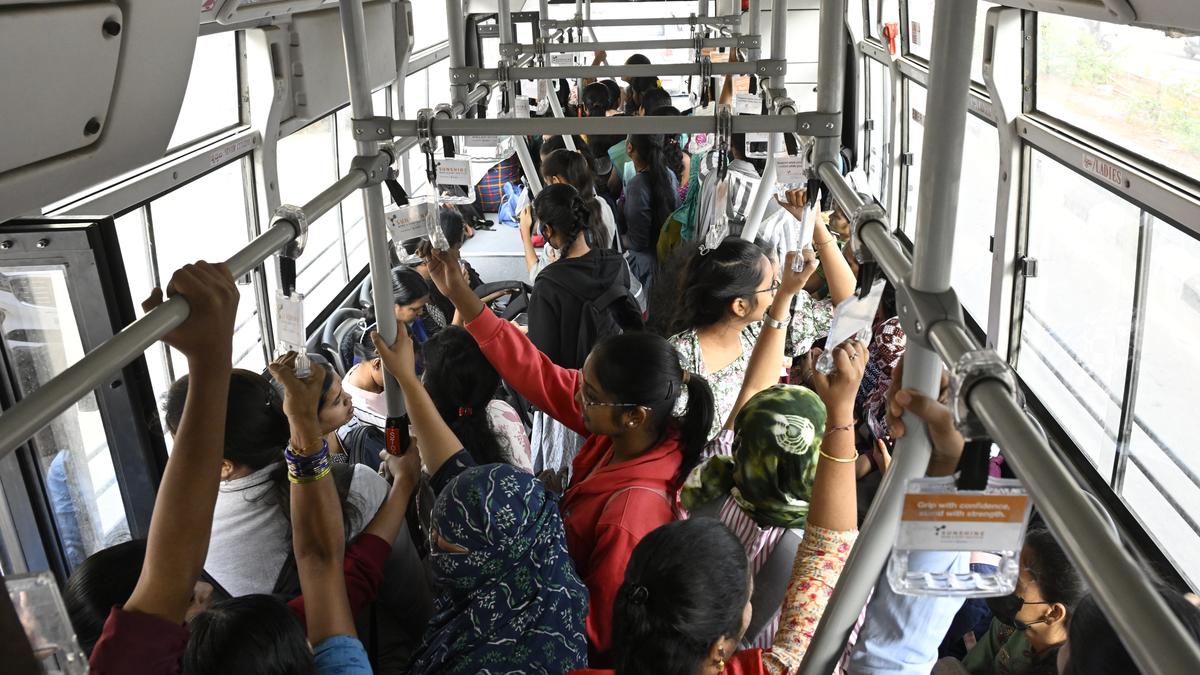
Mahalakshmi scheme: a boon for women and TGSRTC
The Hindu
Mahalakshmi Scheme boosts TGSRTC ridership, offering free bus rides to women and transpersons, improving occupancy and financial stability.
The Mahalakshmi Scheme, one of the Congress’s six flagship guarantees, has significantly increased ridership on Telangana State Road Transport Corporation (TGSRTC) buses. Aimed at providing free bus rides to women and transpersons, it has met with considerable success since its launch a year ago.
Chief Minister A. Revanth Reddy had inaugurated the scheme on December 3, 2023. The scheme was implied as a turning point for inclusive transport. Within days, the initiative drew an overwhelming response, with bus stops and stations across the State witnessing unprecedented crowds, clamouring to board TGSRTC buses. The surge in passengers initially posed operational challenges, leaving the Corporation’s management grappling with logistical pressures and workers stretched thin to meet the soaring demand.
The TGSRTC operates an exhaustive network that includes 11 regions, 97 depots, and 364 bus stations, alongside thousands of bus stops, 2,200 of which are located in the Greater Hyderabad Zone alone. This network facilitates the operation of 9,072 buses daily, connecting more than 11,000 villages across Telangana.
The Mahalakshmi Scheme, rolled out across 7,200 buses, has had a significant impact. Official data revealed that in its first 11 days, 62% of the passengers were women. Cut to this month, with an average of 11 lakh zero-fare tickets issued daily, the Corporation has witnessed a remarkable improvement in its occupancy ratio (OR), which surged from a sluggish 69%, to 88% a month after the launch to an impressive 94% in November this year. So far, women constituted 65.56% of passengers.
For years, TGSRTC struggled with stagnant ridership, rising fuel costs, and mounting losses. These losses were exacerbated by expenses that went towards employee salaries and administrative costs. However, the scheme’s success has alleviated some of these financial woes , offering a lifeline to the beleaguered Corporation.
Corporation officials noted that the scheme has turned around operations at several depots, with a large number turning ‘profitable’. The fact that women took several crore trips thus far points to its success.
Interestingly, the outlay for the TGSRTC during the last budget session was ₹ 3,082.52 crore was solely for the scheme, a departure from bus pass reimbursement allocation. According to officials, another ₹631.04 crore and another ₹370.86 crore were components of the SC and ST sub-plans.

The Karnataka government has drafted a comprehensive master plan for the integrated development of Kukke Subrahmanya temple, the State’s highest revenue-generating temple managed by the Hindu Religious Institutions and Charitable Endowments Department. The redevelopment initiative is estimated to cost around ₹254 crore and aims to enhance infrastructure and facilities for devotees.












